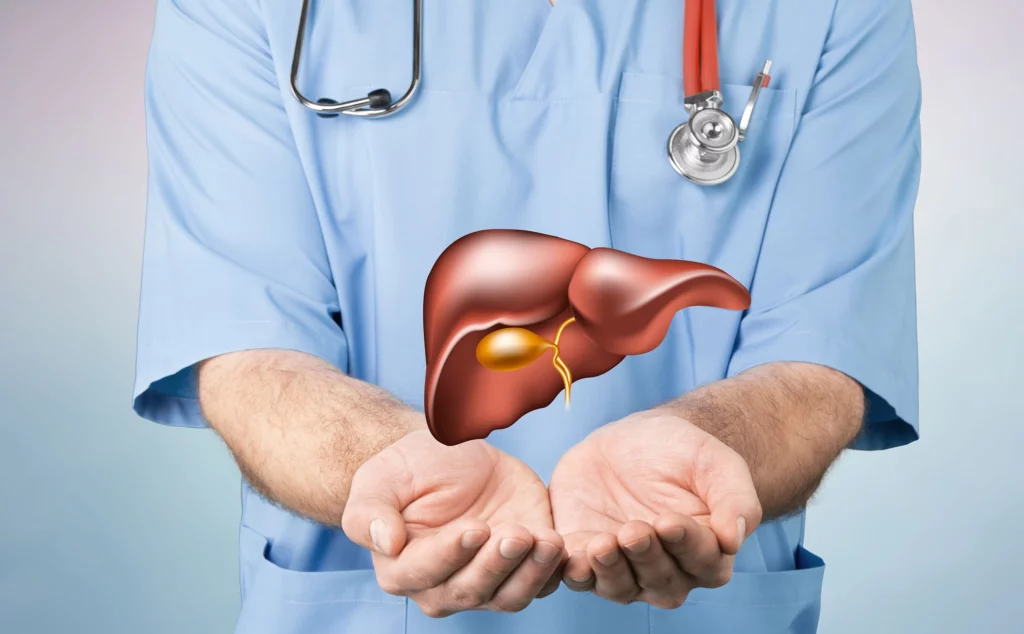Ovarian cancer is one of the most challenging gynecologic cancers, affecting thousands of women globally each year. Often called the “silent killer” because it typically goes unnoticed until it reaches an advanced stage, ovarian cancer is characterized by the uncontrolled growth of abnormal cells in the ovaries. The ovaries are an essential part of the female reproductive system, responsible for producing eggs and hormones such as estrogen and progesterone. This article delves deeply into the various facets of ovarian cancer, including its types, symptoms, risk factors, diagnosis, treatment options, and prevention methods. Raising awareness about ovarian cancer is vital for early detection, which significantly improves survival rates.
Understanding Ovarian Cancer: An Overview
Ovarian cancer begins in the ovaries, which are part of the female reproductive system, located on each side of the uterus. There are several different types of ovarian cancer, primarily categorized based on the types of cells where the cancer originates. While ovarian cancer represents about 3% of cancers among women, it accounts for a disproportionate number of cancer-related deaths due to late detection. In the United States alone, over 21,000 women are diagnosed each year, and it remains a leading cause of death among gynecologic cancers globally.
Types of Ovarian Cancer
Ovarian cancer is classified into three primary types:
- Epithelial Ovarian Cancer
This is the most common type, making up about 90% of all ovarian cancers. It originates from the cells covering the outer surface of the ovary. Within epithelial ovarian cancer, there are subtypes like serous, mucinous, endometrioid, and clear cell, each with unique characteristics and treatment responses. - Germ Cell Tumors
These cancers arise from the cells responsible for forming eggs. Germ cell tumors are rare and usually occur in younger women. They are generally more responsive to treatment and have a higher cure rate. - Stromal Tumors
These tumors develop in the connective tissue that holds the ovary together and produces estrogen and progesterone. Stromal tumors are also rare and often detected at an early stage due to hormone-related symptoms, like abnormal uterine bleeding.
Signs and Symptoms of Ovarian Cancer
Early-stage ovarian cancer often has no symptoms, or the symptoms are so vague that they are mistaken for common gastrointestinal or menstrual issues. When symptoms do appear, they often include:
- Abdominal Bloating or Swelling
Persistent bloating or a feeling of fullness can indicate ovarian cancer, especially if it lasts longer than a few weeks. - Pelvic or Abdominal Pain
Frequent pain in the lower abdomen or pelvis, different from menstrual cramps, is a common symptom. - Difficulty Eating or Feeling Full Quickly
If eating small amounts of food leads to a sensation of fullness, it may be a sign of ovarian cancer. - Urinary Urgency or Frequency
An increased need to urinate or urinary urgency is a less well-known symptom that can be related to ovarian cancer.
Other possible symptoms include fatigue, back pain, irregular menstruation, constipation, or weight loss. These symptoms alone do not confirm ovarian cancer, but when they persist for more than a few weeks, they should prompt a visit to a healthcare provider.
Risk Factors for Ovarian Cancer
Several factors contribute to an increased risk of developing ovarian cancer. Understanding these factors can help with assessing individual risk:
- Age
Most ovarian cancer cases occur in women over 50, with a higher incidence in postmenopausal women. - Family History of Cancer
Having a close relative with ovarian, breast, or colorectal cancer increases one’s risk. Genetic mutations like BRCA1 and BRCA2 are associated with a significantly higher risk. - Genetic Mutations
Mutations in BRCA1 and BRCA2 genes are strongly linked to ovarian cancer. Lynch syndrome, another genetic condition, also increases the risk of ovarian and other cancers. - Reproductive History and Infertility
Women who have never been pregnant or who have experienced infertility may be at an increased risk. Women who used fertility drugs also show a slightly elevated risk. - Hormone Replacement Therapy (HRT)
Prolonged use of hormone replacement therapy, especially estrogen-only HRT, has been associated with an increased risk of ovarian cancer. - Lifestyle Factors
Factors such as obesity, smoking, and a diet high in red and processed meats can contribute to the risk of ovarian cancer. - Endometriosis
This condition, where uterine-like tissue grows outside the uterus, has been linked to a higher risk of certain ovarian cancers.
While these factors can increase risk, not all women with these risk factors will develop ovarian cancer, and some women without these risk factors may still develop it.
Screening and Diagnosis
Due to the often asymptomatic nature of ovarian cancer in its early stages, screening is challenging. There is currently no reliable, standard screening test for ovarian cancer. However, several diagnostic tools can help identify the disease:
- Pelvic Exam
A pelvic examination is usually the first step, where a doctor manually examines the uterus, ovaries, and other organs to feel for any abnormalities. - Transvaginal Ultrasound (TVUS)
This imaging test uses sound waves to detect tumors on the ovaries. While useful, it cannot confirm if a tumor is cancerous. - CA-125 Blood Test
The CA-125 is a protein marker in the blood that is often elevated in women with ovarian cancer. However, elevated CA-125 levels can also result from other non-cancerous conditions. - Imaging Scans (CT, MRI, and PET)
CT scans, MRI, and PET scans provide detailed images of the abdomen and pelvis, helping identify potential cancer spread. - Biopsy
If ovarian cancer is suspected, a biopsy, typically done during surgery, is needed to confirm the diagnosis and determine the cancer’s stage and grade. - Genetic Testing
For women with a family history of ovarian cancer, genetic testing for mutations in the BRCA1, BRCA2, and other genes can be valuable. Knowing one’s genetic status can inform both treatment options and preventive measures.
Staging and Grading of Ovarian Cancer
Ovarian cancer staging is essential for determining the extent of the disease and planning treatment. Stages range from I to IV:
- Stage I: Cancer is limited to one or both ovaries.
- Stage II: Cancer has spread to nearby pelvic organs.
- Stage III: Cancer has spread to the abdomen or lymph nodes.
- Stage IV: Cancer has metastasized to distant organs, such as the liver or lungs.
The cancer grade, which is determined by examining the cancer cells under a microscope, indicates how aggressive the cancer is likely to be. Higher-grade cancers tend to grow and spread faster than lower-grade cancers.
Treatment Options for Ovarian Cancer
Ovarian cancer treatment depends on the stage, grade, and individual patient characteristics. Most treatments involve a combination of surgery and chemotherapy, with newer treatments emerging as part of precision medicine.
- Surgery
Surgery is often the first line of treatment and aims to remove as much of the cancer as possible. Surgical options vary depending on the cancer’s extent:
- Debulking Surgery: Removing as much of the tumor as possible, especially in advanced-stage cancers.
- Hysterectomy: Removal of the uterus.
- Oophorectomy: Removal of one or both ovaries.
- Salpingectomy: Removal of the fallopian tubes. If the cancer has spread, surgeons may also remove parts of other affected organs, like the intestines or bladder.
- Chemotherapy
Chemotherapy uses drugs to kill cancer cells and is typically administered after surgery to target any remaining cancer cells. Commonly used drugs for ovarian cancer include carboplatin and paclitaxel. Chemotherapy can have side effects, including nausea, fatigue, and hair loss. - Targeted Therapy
Targeted therapies, such as PARP inhibitors, are a newer option for women with specific genetic mutations (e.g., BRCA1 or BRCA2). These drugs target cancer cells while sparing normal cells, potentially leading to fewer side effects. - Radiation Therapy
Though less common in ovarian cancer treatment, radiation therapy may be used to treat specific areas where cancer has spread. It is more commonly used for palliative care to relieve symptoms. - Hormone Therapy
Hormone therapy may be used in certain types of ovarian cancers, such as stromal tumors, which can be hormone-sensitive. This therapy aims to block hormone production, slowing the growth of cancer cells. - Immunotherapy
Immunotherapy is an emerging approach, where the body’s immune system is harnessed to attack cancer cells. Clinical trials are currently exploring its efficacy in ovarian cancer. - Clinical Trials
Many patients participate in clinical trials that test new treatments or combinations of treatments. For women with advanced-stage ovarian cancer, clinical trials can provide access to cutting-edge therapies.
Certainly, here’s the continuation of the article with prevention strategies, lifestyle advice, and closing thoughts on ovarian cancer awareness.
Preventing Ovarian Cancer: Risk Reduction Strategies (Continued)
- Oral Contraceptives
Long-term use of birth control pills has been linked to a reduced risk of ovarian cancer. Studies suggest that women who use oral contraceptives for five years or more may lower their risk by up to 50%. However, birth control pills may have other risks, so it’s essential to consult with a healthcare provider before starting. - Surgical Options for High-Risk Individuals
For women with a strong family history of ovarian cancer or genetic mutations (e.g., BRCA1, BRCA2), preventive surgeries may be considered. Prophylactic oophorectomy (removal of the ovaries) or salpingectomy (removal of the fallopian tubes) can significantly reduce the risk of ovarian cancer. These surgeries are generally recommended only for women at very high risk and after they have completed childbearing. - Pregnancy and Breastfeeding
Women who have been pregnant and have breastfed may have a lower risk of ovarian cancer, though this protection is modest. Pregnancy, especially when it occurs at an earlier age, can offer a protective effect, likely due to reduced ovulation cycles. - Healthy Lifestyle Choices
While there’s no specific diet that can prevent ovarian cancer, a healthy lifestyle can contribute to overall well-being and potentially lower cancer risk. Regular exercise, a balanced diet rich in fruits and vegetables, and maintaining a healthy weight may all contribute to lower cancer risk. Limiting alcohol intake and avoiding smoking can further improve health and reduce cancer risks. - Avoiding Talcum Powder Products
Some studies have suggested a possible link between the use of talcum powder in the genital area and ovarian cancer. While evidence is mixed, limiting exposure to talcum powder can be a precautionary measure, especially given alternative options for personal hygiene.
Living with Ovarian Cancer: Coping and Support
For those diagnosed with ovarian cancer, managing physical, emotional, and psychological well-being is a central part of the journey. Living with ovarian cancer can bring various challenges, including dealing with treatment side effects, emotional strain, and changes in personal relationships. Here are some support strategies:
- Psychological Support and Counseling
Counseling can help individuals cope with a cancer diagnosis, especially when dealing with stress, anxiety, or depression. Many hospitals and clinics offer access to counselors, support groups, and therapy options that can provide emotional support. - Support Groups
Support groups, either in person or online, offer a way for individuals to connect with others facing similar experiences. These groups can provide practical advice, emotional support, and a sense of community, which can be especially comforting during difficult times. - Lifestyle Adjustments
Many ovarian cancer patients find that making adjustments to their lifestyle can help manage the effects of treatment. Incorporating gentle exercise, maintaining a balanced diet, and getting adequate sleep can help maintain energy levels, improve mood, and enhance overall quality of life. - Complementary Therapies
Complementary therapies such as yoga, meditation, acupuncture, and massage therapy may help reduce symptoms like nausea, pain, and fatigue. These therapies can also offer relaxation and stress relief, which are beneficial to mental health. - Palliative Care
For those with advanced-stage cancer, palliative care can provide relief from symptoms and improve quality of life. Palliative care focuses on alleviating discomfort and managing pain rather than attempting to cure the disease, and it is an essential aspect of comprehensive cancer care.
Research and Future Directions in Ovarian Cancer
Ongoing research in ovarian cancer aims to improve early detection, treatment options, and overall survival rates. Some promising areas of research include:
- Early Detection and Biomarkers
Researchers are working to identify reliable biomarkers that can detect ovarian cancer at an early stage. Blood tests that measure specific proteins or genetic markers, along with advancements in imaging techniques, are at the forefront of ovarian cancer detection research. - Targeted Therapy
Targeted therapy continues to advance with the development of drugs designed to attack specific genetic mutations in ovarian cancer cells. PARP inhibitors are a recent breakthrough for BRCA mutation carriers, and further research into genetic targeting holds promise for more personalized treatment approaches. - Immunotherapy Advances
Immunotherapy has shown positive results in other types of cancer, and clinical trials are exploring its potential in treating ovarian cancer. Strategies to help the immune system recognize and attack cancer cells are being studied, and many researchers believe immunotherapy could be a vital part of ovarian cancer treatment in the future. - Combination Therapy
Combining treatments, such as targeted therapy and chemotherapy, is an area of exploration that may enhance treatment efficacy and minimize side effects. For example, combining immunotherapy with chemotherapy or targeted drugs could improve survival rates and offer new options for patients with advanced ovarian cancer. - Artificial Intelligence and Precision Medicine
Advances in artificial intelligence (AI) are enabling more precise cancer diagnosis, treatment recommendations, and prediction of patient outcomes. By analyzing data from thousands of ovarian cancer cases, AI can help identify patterns and personalize treatment plans, tailoring them to individual genetic and environmental factors.
Raising Awareness and Advocating for Change
Raising awareness about ovarian cancer is essential to combatting its often-late diagnosis. Awareness campaigns, educational programs, and community support initiatives play a crucial role in:
- Educating Women on Symptoms and Risks
Increased awareness of ovarian cancer symptoms, even those that seem vague, can help women recognize early warning signs. Educational efforts emphasize the importance of regular medical check-ups and paying attention to bodily changes. - Supporting Research and Funding
Funding for ovarian cancer research is essential for developing new treatments and improving survival rates. Advocacy groups play a critical role in securing funding for research, supporting those diagnosed, and providing resources to healthcare professionals. - Promoting Genetic Counseling
For those with a family history of ovarian cancer, genetic counseling can provide valuable insights and help them make informed decisions about their health. Awareness efforts promote genetic testing options, especially for high-risk individuals.
Concluding Thoughts on Ovarian Cancer Awareness
Ovarian cancer remains a significant health challenge for women worldwide. The key to improving outcomes lies in continued awareness, early detection, and ongoing research into effective treatments. While much progress has been made, there is still a great need for more accessible screening tools and therapies that can provide a cure or significantly extend survival.
By understanding the risk factors, symptoms, and treatment options, individuals can take proactive steps in managing their health. Advances in technology and medicine are promising, and with further support for research and patient care, there is hope for a future where ovarian cancer diagnoses come earlier and treatments become more effective.
Every September, which is Ovarian Cancer Awareness Month, advocates emphasize the importance of education, research funding, and support for affected women and their families. Learning more about ovarian cancer and supporting these efforts can help spread awareness and make a meaningful difference in the lives of those impacted by this condition. Together, as more people become informed and involved, we can work towards reducing the burden of ovarian cancer and ultimately finding a cure.




